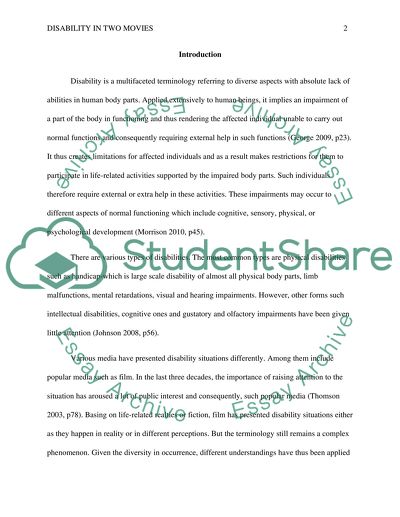Cite this document
(“Disability In Two Movies Essay Example | Topics and Well Written Essays - 2250 words”, n.d.)
Disability In Two Movies Essay Example | Topics and Well Written Essays - 2250 words. Retrieved from https://studentshare.org/visual-arts-film-studies/1448228-discuss-the-manner-in-which-disability-has-been
Disability In Two Movies Essay Example | Topics and Well Written Essays - 2250 words. Retrieved from https://studentshare.org/visual-arts-film-studies/1448228-discuss-the-manner-in-which-disability-has-been
(Disability In Two Movies Essay Example | Topics and Well Written Essays - 2250 Words)
Disability In Two Movies Essay Example | Topics and Well Written Essays - 2250 Words. https://studentshare.org/visual-arts-film-studies/1448228-discuss-the-manner-in-which-disability-has-been.
Disability In Two Movies Essay Example | Topics and Well Written Essays - 2250 Words. https://studentshare.org/visual-arts-film-studies/1448228-discuss-the-manner-in-which-disability-has-been.
“Disability In Two Movies Essay Example | Topics and Well Written Essays - 2250 Words”, n.d. https://studentshare.org/visual-arts-film-studies/1448228-discuss-the-manner-in-which-disability-has-been.


